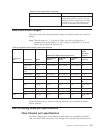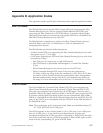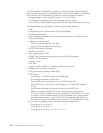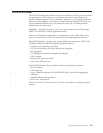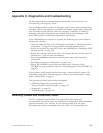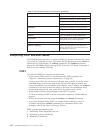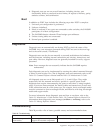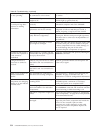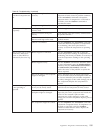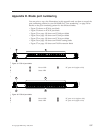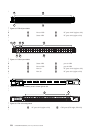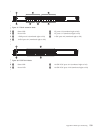
4. Diagnostic tests are run on several functions, including circuitry, port
functionality, ability to send and receive frames, all aspects of memory, parity,
statistics counters, and serialization.
Boot
In addition to POST, boot includes the following steps after POST is complete:
1. Universal port configuration is performed.
2. Links are initialized.
3. Fabric is analyzed. If any ports are connected to other switches, the SAN384B
participates in a fabric configuration.
4. The SAN384B obtains a domain ID and assigns port addresses.
5. Unicast routing tables are constructed.
6. Normal port operation is enabled.
Diagnostics
Diagnostic tests are automatically run during POST to check the status of the
SAN384B. Any error messages generated during POST are sent to the error logs
and to the serial console, if connected.
Diagnostic tests can also be run manually to test and troubleshoot the hardware
and the firmware, including internal connections and circuitry, transceivers, and
port cables. However, diagnostic tests are generally intended for use by support
personnel.
Note: Error messages do not necessarily indicate that the SAN384B requires
maintenance.
Each diagnostic test can be implemented by entering the related command through
a Telnet or serial session. For a list of diagnostic tests and commands, refer to the
Fabric OS Command Reference Manual and the Fabric OS Administrator's Guide.
All diagnostic tests are run at link speeds of 1, 2, 4, and 8 Gbps. They might
temporarily lock the transmit and receive speeds to a specific speed. Some
diagnostic tests require interconnecting the ports to each other or using loopback
plugs. If ports are interconnected, the media (cables and transceivers) at each end
of the connection must be of the same type. For example, short wavelength media
must be connected to short wavelength media, and likewise with long wavelength
media and copper media.
For more information about diagnostic tests and how to run them, refer to the
Fabric OS Administrator's Guide and the Fabric OS Command Reference Manual. For
information about diagnostic error messages (errShow or errDump), refer to the
Fabric OS Message Reference Manual.
Troubleshooting
Table 28 provides a list of issues, possible causes, and recommended actions.
Table 28. Troubleshooting
Issue Possible Cause Recommended Action
Entire chassis powers off
automatically.
Power supplies are inadequate to
support the installed components.
Add an additional power supply.
Appendix C. Diagnostics and troubleshooting 133



